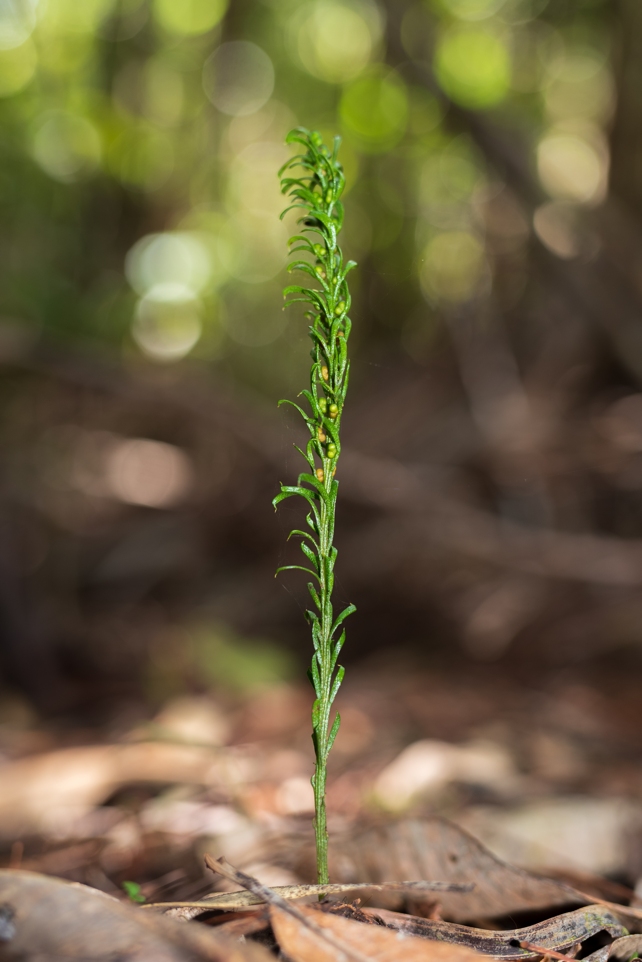A small, seemingly ordinary fern that only grows on a remote island in the Pacific Ocean was crowned Friday by the Guinness Book of World Records for having the largest genome of any living creature on Earth.
new Caledonian fern, Tmesipteris oblanceolataIt contains more than 50 times more DNA packed into the nucleus of its cells than humans.
In a new study, scientists said that if DNA from one of the fern’s cells – which is only a fraction of a millimeter wide – were analyzed, it would extend 106 meters (350 feet).
If it stood upright, the DNA would be taller than the tower that holds the famous Big Ben bell in London.

The fern genome weighs 160 gigabase pairs, which is a measure of the length of DNA.
This is seven percent larger than the previous record holder, the Japanese flowering plant Paris japonica.
The human genome is a relatively tiny 3.1 gigabytes.
If our DNA were unraveled, it would be about two meters long.
Elijah Leach, one of the study’s participants and a researcher at the Royal Botanic Gardens Kew in the UK, told AFP that the team was “really surprised to find something so much larger.” Paris Japonica“.
“We thought we had already reached the biological limit,” she said. “We are really pushing the limits of biology.”
The fern, which measures 5 to 10 centimeters long, is only found in New Caledonia, a French Pacific territory that has recently experienced unrest.
Two members of the research team traveled to the main island, Grande Terre, in 2023 and worked with local scientists on the study published in the journal iScience.
Guinness World Records awarded the fern the “title of largest genome.”
Adam Millward, managing editor of Guinness World Records, said the win by the “harmless” fern demonstrated that “record holders are not always the flashiest on the outside.”
What is a genome again?
It is estimated that humans have more than 30 trillion cells in our bodies.
Within each of these cells is a nucleus that contains DNA, which is “an instruction book that tells an organism like us how to live and stay alive,” Leach explained.
All of an organism’s DNA is called its genome.
Until now, scientists have estimated the size of the genome at about 20,000 organisms, which is just a small fraction of life on Earth.
Among animals, the marbled lungfish is the largest, at 130 GB.
While plants have the largest genomes, they can also have incredibly small genes. The genome of the carnivorous Genlisea aurea is only 0.06 Gb.
But we humans do not need to feel inferior when comparing ourselves to the powerful T. oblanceolata.
All evidence suggests that having a large genome is a bad thing, Leach said.
The more DNA you have, the larger your cells have to compact completely.
For plants, larger cells mean that things like leaf pores have to be larger, which can make them grow more slowly.
It’s also difficult to make new copies of all that DNA, which limits their reproductive capabilities.
This means that the most massive genomes appear in slow-growing perennials that cannot easily adapt to adversity or compete with competition.
Genome size could therefore influence how plants respond to climate change, land-use change and other environmental challenges caused by humans, Leach said.
Why all this DNA?
It’s possible that there are larger genomes out there somewhere, but Leach thinks this fern should be close to the limit.
“I can’t understand how an organism with all this DNA functions,” she said.
She acknowledged that scientists don’t know what most of the DNA in such huge genomes does.
Some say most of it is “junk DNA.”
“But maybe that’s our ignorance,” Leach said. “Maybe it has a function, and we still have to find it.”
Jonathan Windle, a botanist at Iowa State University who was not involved in the research, agrees that it is “astonishing” the amount of DNA the fern packs.
But he told AFP that this “represents only the first step.”
“A big mystery is what all this diversity means – how do genomes grow and shrink, and what are the evolutionary causes and consequences of these phenomena?”
© Agence France-Presse

“Beer aficionado. Gamer. Alcohol fanatic. Evil food trailblazer. Avid bacon maven.”
